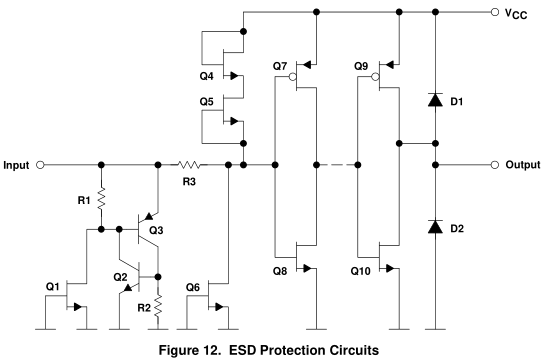Hi team,
My customer wants to confirm the internal input or output protection for these deivces. Protection like the clamping diode.
• SN74HC373APWR
• SN74ACT373NSR
• SN74LV373APWR
• SN74HCT373NSR
Could you kindly share us the internal circuit for this?
Regards,
Ohashi


